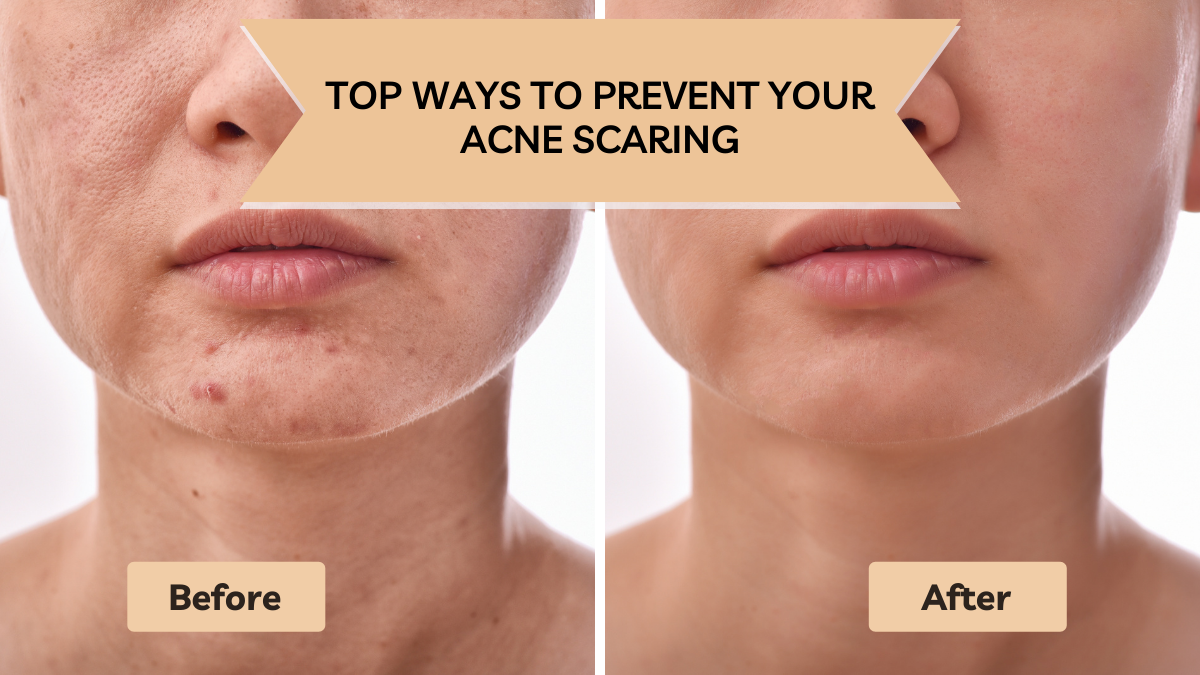
Acne is generally a temporary concern, but the acne scarring can be permanent. Acne scars are a nightmare as it affects appearance and self-confidence. Due to skin breakouts, you may experience pick marks on the face and other body parts. Let’s first understand acne, which can be Mild, Moderate, or Severe:
- Mild Acne: These are few with fairly minor breakouts. It causes less inflamed white or blackheads, with or without a few red bumps, and the blemishes aren’t widespread. It is best to treat Mild Acne as early as possible, as it can progress to a severe form. Mild acne can be treated by over-the-counter acne treating products.
- Moderate Acne: In moderate acne, breakouts are more visible, and they may cause red bumps and puss-filled zits. Over-the-counter products aren’t strong enough to treat this acne type. Prescription medications are needed to clear up moderate breakouts.
- Severe Acne: In severe acne, blemishes are large, red, and swollen. The most significant distinction between Moderate and Severe Acne is inflammation. Severe acne can develop painful, pus-filled lesions beneath the skin’s surface, known as nodules or cysts. If you are experiencing such severe acne, you must visit the best Dermatologist in Chennai.
Causes of Acne Scarring
One cause of acne scars is an inflamed lesion, such as a papule, pustule, or cyst. An inflamed blemish occurs when the pore, or follicle, becomes clogged with oil, dead cells, and bacteria. Let us understand how acne forms to begin. Acne goes through three stages. The first stage is triggered by excess oil production due to hormonal changes such as excess androgen, regardless of age. Dead skin cells and dirt, excess oil clogs your pores develop as whiteheads and blackheads, which can last a few days.
The pimple appears as a visible red papule during the middle stage, also known as inflammatory acne. A bacteria starts to attack the skin and grows as a spot, lasting up to a week. The white fluid we see inside acne is a reaction to inflammation, and the body’s immune system responds to the growing bacteria there. Since this is the stage where it is most visible, there is a tendency to burst it as a way to try and alleviate it. The final stage of the pimple is when it dries and begins to crust on its way out of your skin, bringing the chances of leaving a scar.
Different Types of Acne Scarring
Some people do not experience acne scarring. But most people have to deal with acne scars at some point in their lives. Acne scarring can vary depending on the type of acne you get and how you treat it. Different kinds of Scars include:
Atrophic Scars
These are indented scars that heal below the normal layer of skin tissue. Atrophic Scars occur when the skin cannot regenerate tissue, resulting in imbalance scarring. Its spots can appear differently depending on a person’s acne history. There are three types of Atrophic Scars:
- Boxcar Scar: A boxcar scar is a broad or oval depression in the skin that develops after some acne heals. These scars occur because of widespread acne, chickenpox, or varicella, which causes an itchy, red rash with blisters.
- Ice pick Scar: Acne erupts when pores on your skin get clogged. After acne has healed, it leaves ice pick scars. Ice pick scars are acne scars that have a pitted or sunken appearance. They tend to be very tough to treat and often require long-term, rigorous treatment.
- Rolling Scar: Rolling scars have varied depths and sloping edges, giving the skin a wavy and uneven appearance. They can happen because of the bands of scar tissue that form under the skin.
Hypertrophic and Keloid Scars
Hypertrophic and Keloid scars form as raised lumps of scar tissue where the acne used to be, unlike Atrophic scars. It occurs when scar tissues build-up due to previous acne spots. A hypertrophic scar remains the same size as the acne that caused it. On the other hand, keloid scars can grow beyond the sides of the original acne spot and larger than the acne that caused them. Hypertrophic and keloid scars appear on the jawline, chest, back, and shoulders. People with dark skin color are more likely to develop this type of scarring.
Ways to Prevent Acne Scarring
You can take mindful steps to prevent acne scars and minimize the appearance and size of the acne. Here’s what you can do as soon as acne develops.
Treat the Acne scarring ASAP
Begin treating the acne as soon as it is there. Quick treatment helps to minimize breakouts and prevents acne from turning into a more severe form. If over-the-counter treatments aren’t doing any good to your skin, you should see the Dermatologist right away.
Reduce the Inflammation
Inflamed acne is more likely to leave deep acne scars behind than non-inflamed breakouts. Avoid anything that will further irritate the skin, and the goal should be to calm the inflammation. Do not use harsh skin care products or scrub aggressively.
Resist popping pimples
As tempting as it might look, you should always try not to squeeze, pick or pop the acne. It can push debris deep into the dermis, spreading the infection to other tissues and worsening the inflammation.
No picking at Scabs
Leave the scabs alone as they are the skin’s natural “band-aid,” which heals the wound. Taking a scab off an injury before it heals can prolong the healing process and increase the risk of scarring.
Sunscreen is Vital
Sunscreen, in general, is an essential part of the skincare regime. It protects you from so many skin problems. Use a safe and effective sunscreen (preferably SPF30 and above) daily to prevent the cells in acne from developing melanocytes. Excess melanocytes can darken the skin and is the reason for discoloration in acne scars.
Consult a Dermatologist
Acne is most common in teens; however, it can appear at any age. Acne is different at different life stages and will need age-specific treatment. Although, few scar treatments will minimize the appearance of acne scarring. Though you can treat mild acne vulgaris with drugstore products, any other kind or severity warrants a dermatologist’s attention. Studies suggest Microneedling, and Non-ablative fractional erbium lasers are some of the best options for acne scarring.
Best Clinic in Chennai for Treating Acne Scarring
Chances are, one may still develop acne scars despite all the efforts done to prevent them. In that case, don’t hesitate to consult a dermatologist. Welona, Slimming, Skin and Hair clinic in Chennai can suggest the best acne and acne scars treatment. Book an appointment with Welona experts and get treated for acne scarring.

